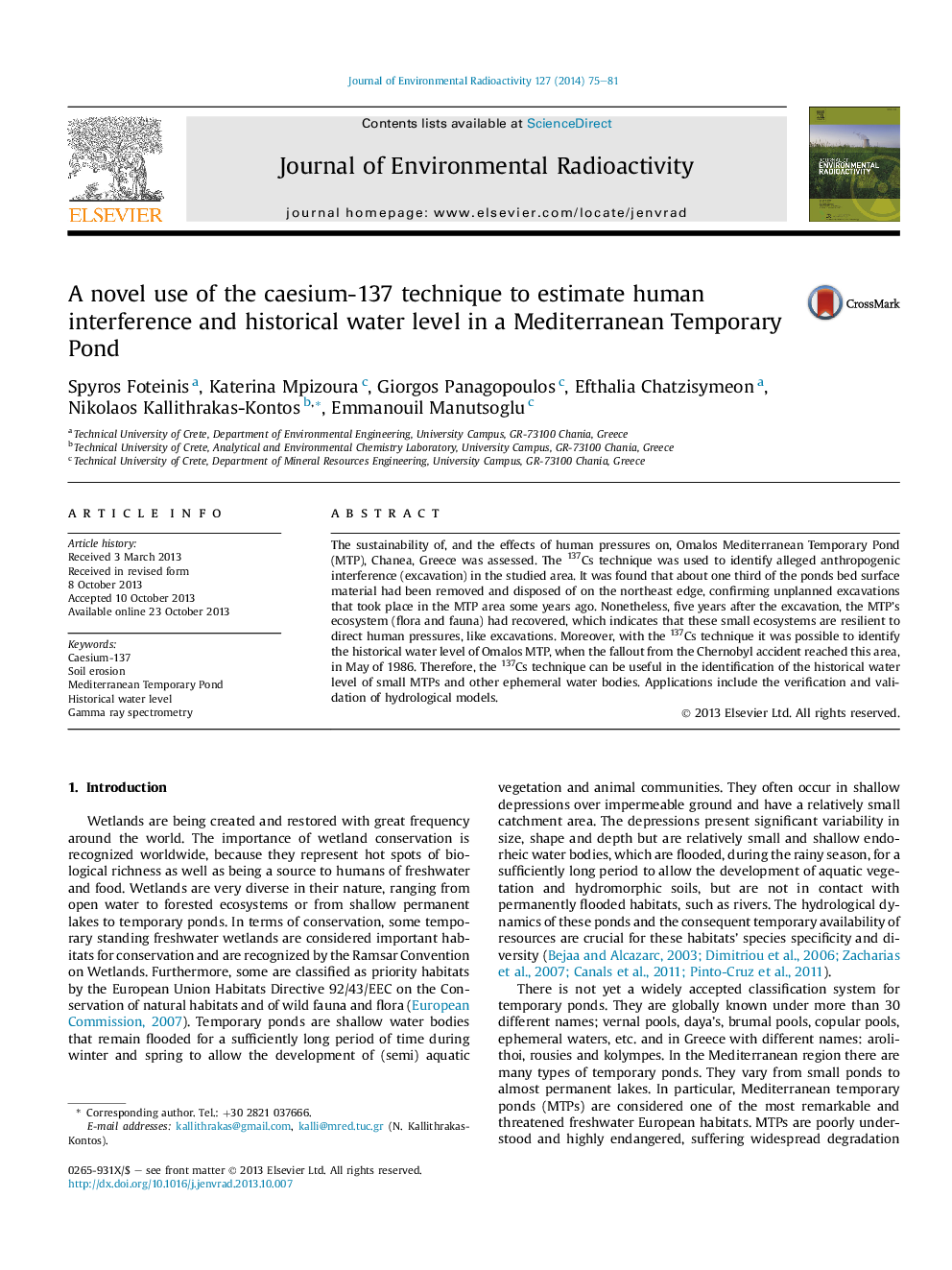| Article ID | Journal | Published Year | Pages | File Type |
|---|---|---|---|---|
| 8083193 | Journal of Environmental Radioactivity | 2014 | 7 Pages |
Abstract
The sustainability of, and the effects of human pressures on, Omalos Mediterranean Temporary Pond (MTP), Chanea, Greece was assessed. The 137Cs technique was used to identify alleged anthropogenic interference (excavation) in the studied area. It was found that about one third of the ponds bed surface material had been removed and disposed of on the northeast edge, confirming unplanned excavations that took place in the MTP area some years ago. Nonetheless, five years after the excavation, the MTP's ecosystem (flora and fauna) had recovered, which indicates that these small ecosystems are resilient to direct human pressures, like excavations. Moreover, with the 137Cs technique it was possible to identify the historical water level of Omalos MTP, when the fallout from the Chernobyl accident reached this area, in May of 1986. Therefore, the 137Cs technique can be useful in the identification of the historical water level of small MTPs and other ephemeral water bodies. Applications include the verification and validation of hydrological models.
Related Topics
Physical Sciences and Engineering
Energy
Nuclear Energy and Engineering
Authors
Spyros Foteinis, Katerina Mpizoura, Giorgos Panagopoulos, Efthalia Chatzisymeon, Nikolaos Kallithrakas-Kontos, Emmanouil Manutsoglu,
